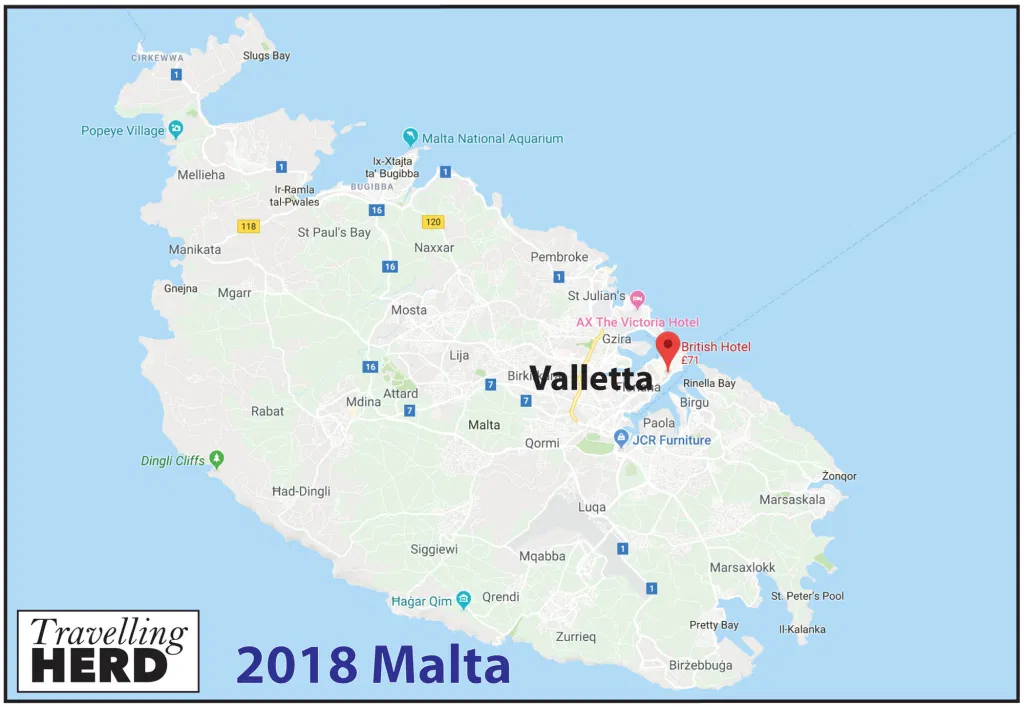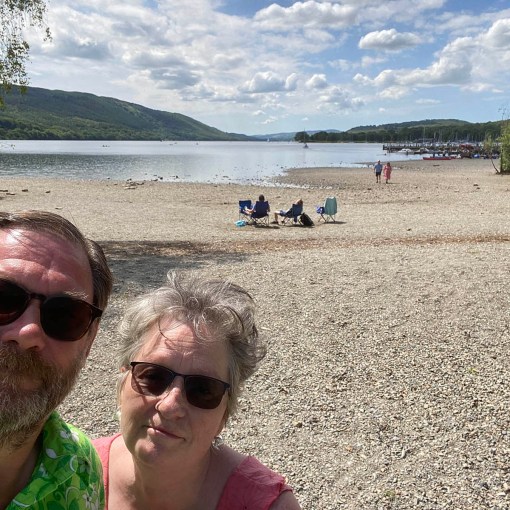Valletta, Mdina and Rabat: Thursday, 22nd – Friday, 23rd November 2018
Another trip on the three cities ferry across the harbour and we discovered that our Valletta passes only covered one return trip on the ferry [this is clearly stated on the ticket but we overlooked it]. We were told we would have to pay on the return trip but as all fares on the Maltese buses and ferries seem to be €1.50 per person, this will not have too serious an impact on our holiday budget.

Our destination for a very filling, slap-up full English breakfast to sustain us for a day’s sightseeing was Il Bacino with harbour views.
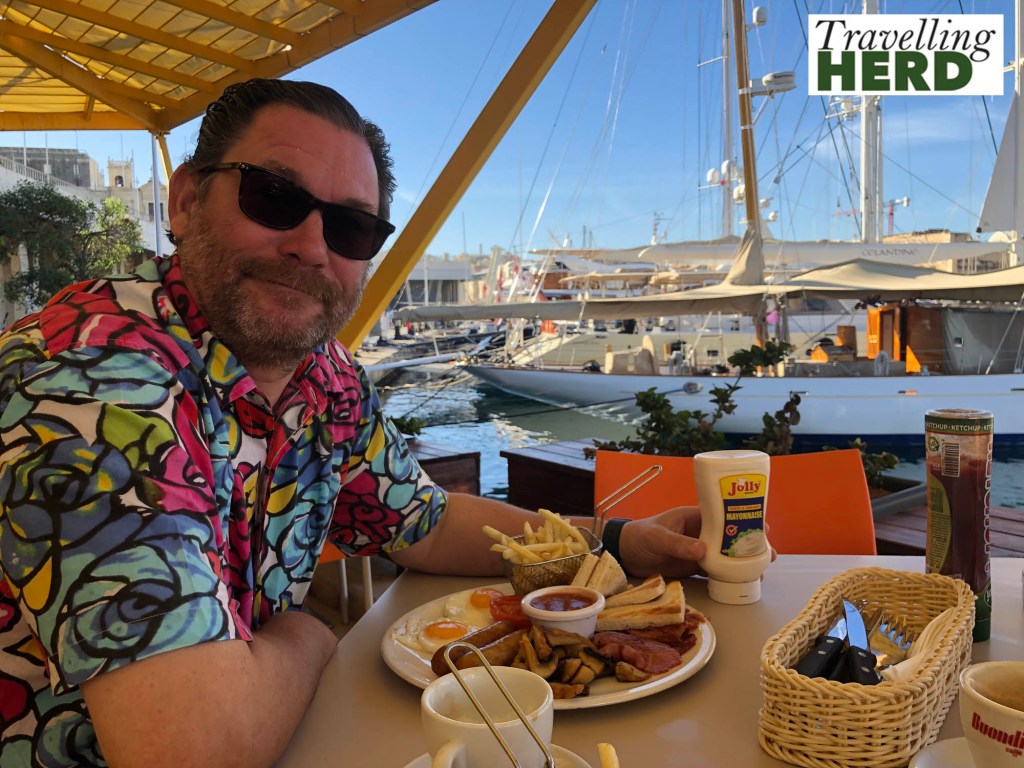
Replete, we headed to the bus station to board the 53 to Rabat and Mdina. For much of the journey, the bus ran parallel to the 26.5 km Wignacourt Aqueduct, which was built in the 17th century by the Grand Master of the Order of Saint John to carry water from springs in Dingli and Rabat to the newly-built capital city Valletta.
Mdina, [above – see more later] – a stunning fortified citadel – is the old capital of Malta and has just 300 inhabitants. Rabat – which means suburb in Semitic and grew up around Mdina – contains many churches and catacombs. One of the attractions in Rabat is the Wignacourt Museum and St Paul’s Grotto. The museum is housed in a building which was used by the Chaplains of the Order of St John and is named after Grand Master Alof de Wignacourt who ruled over the islands from 1601 to 1622 and also paid for the eponymous aqueduct mentioned above.

The museum also gives access to St Paul’s Grotto [above right] where it is said that St Paul took shelter and lived for three months when he was shipwrecked on the island. Both the Knights and the established Church wished to claim dominion over a site of such religious significance and so the Knights built the Church of St Paul above the grotto, whilst the Catholic Church built an adjoining one to be as close as possible to the holy site – the Parish Church of Rabat dedicated to St Paul. The two churches share a facade [left] but have separate entrances.
Close to the Grotto the Knights tunnelled catacombs for their dead, while centuries later the local Maltese were encouraged to carve their own caves into the rock, one per family. Over a hundred of them were created as air raid shelters to protect them during the heavy bombardment by the Italians and Germans during WWII…
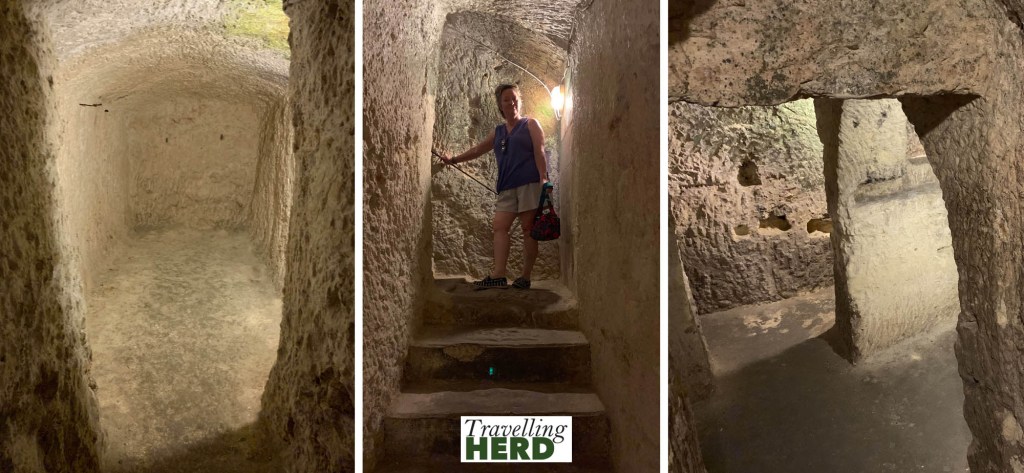
The museum displays religious artefacts and art, featuring paintings of many of the Grand Masters of the Order of the Knights of St John.
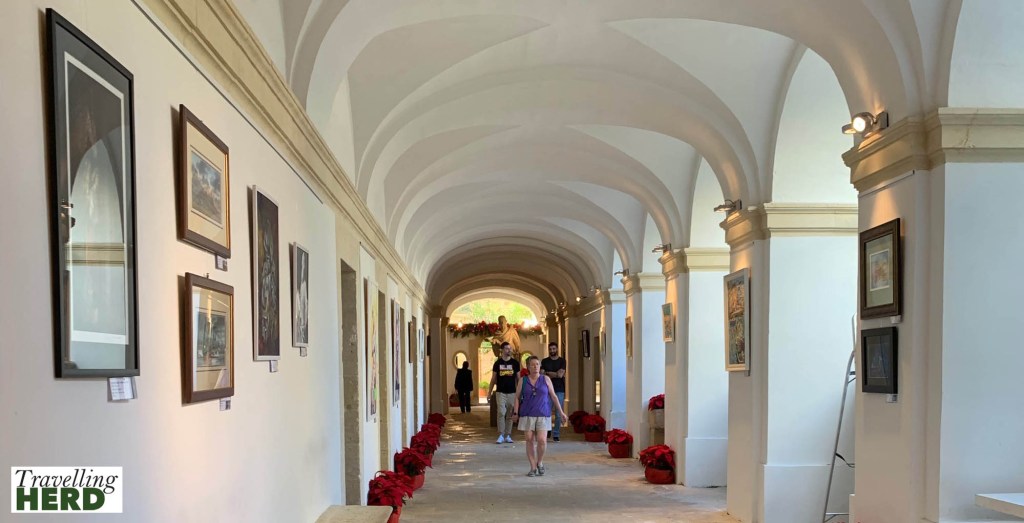
As well as driving on the same side as the British, the pillar boxes and the telephone kiosks in Malta are strangely familiar. Robert could not, however, be persuaded to visit a Christmas Market on the walk up to Mdina, when it was warm enough to wear shorts and a Hawaiian shirt.
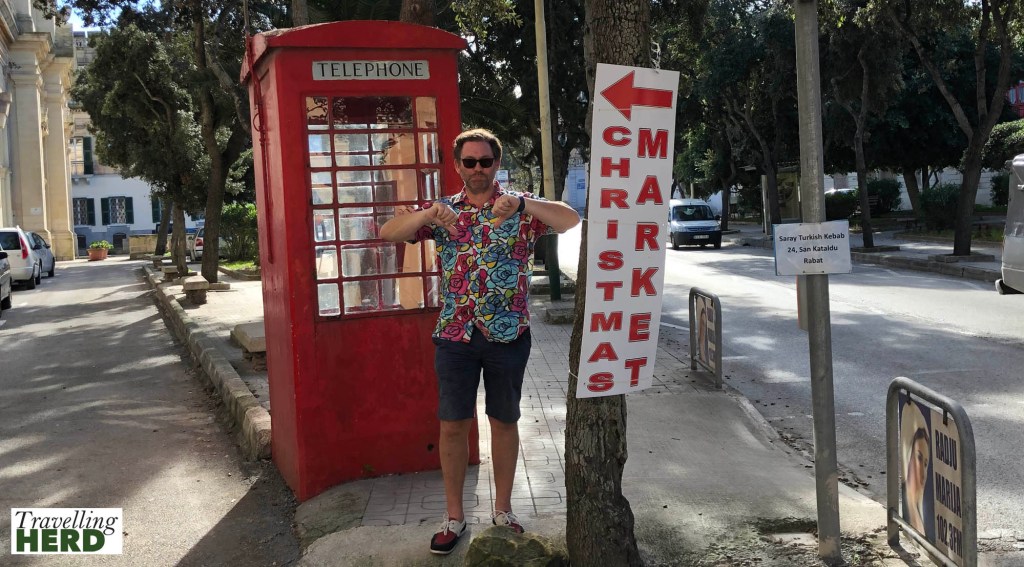
The citadel of Mdina is well worth the visit and was quite peaceful out of season though it may well be significantly more crowded at other times of the year. Fans of the ‘Game of Thrones’ will recognise the bridge below as the entrance to ‘King’s Landing’. In fact Mdina as a whole is used as the film set for many of the locations in ‘King’s Landing’.
The fortifications are impressive . . .
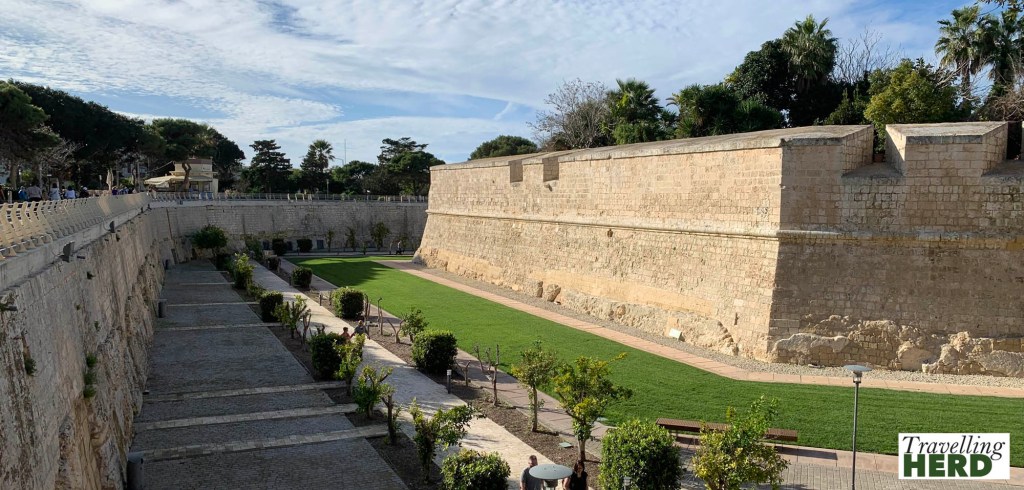
. . . and the views across back to Valletta are unimpeded whilst . . .

. . . St Paul’s Cathedral, according to tradition, stands on the site where the Roman governor Publius met St Paul following his shipwreck. The floor features beautiful inlaid gravestones, similar to those in the cathedral in Valletta.

Later, back in Valletta, the number of Christmas illuminations seems to increase daily.
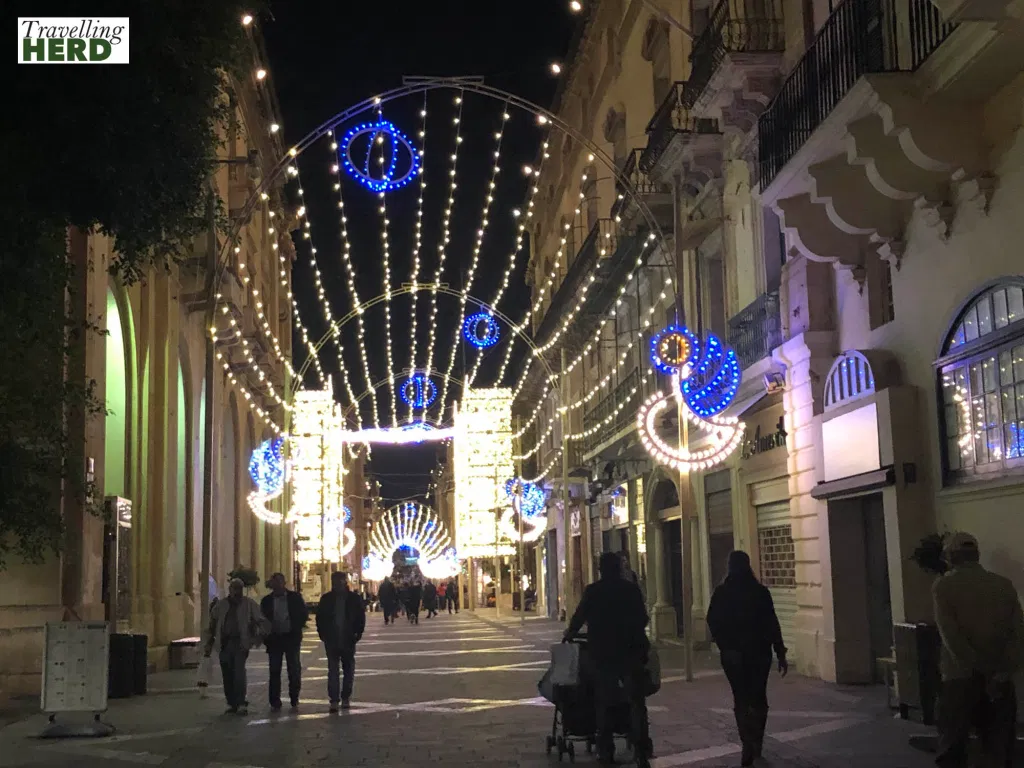
Initially we had planned to visit the island of Gozo on Friday. However, there is so much to see and do on the island of Malta itself that we agreed we need to return, and decided to save Gozo for another trip and possibly stay there for a night or two.
We therefore planned to return to the three cities and try and walk round more of the coastal fortifications. We strolled to the bus depot to catch the number 3 bus towards Kalkara. The bus was slightly delayed but once it arrived, the journey was most illuminating: the route went into the very modern Smart City which is a technology and media park still under construction.
The coastal walk was not complete as certain sections are inaccessible to the public and we had to divert inland but eventually we came to Fort St Angelo, which has stood guard over the Grand Harbour since antiquity. The arrival of the Knights of St John in 1530 heralded the start of a series of building works to enlarge and upgrade the fortifications. Following the Great Siege in 1565, the Knights moved their headquarters to Valletta in 1571 but Fort St Angelo commands unparalleled views across the harbour, and. . .



. . . continued to play an important defensive role, with the British Royal Navy making it the command hub for its fleet in the Mediterranean in 1906. It looks as though the Wignacourt aqueduct even links up with the fort, however it is the opposite – the bridge is carrying the sewage out!
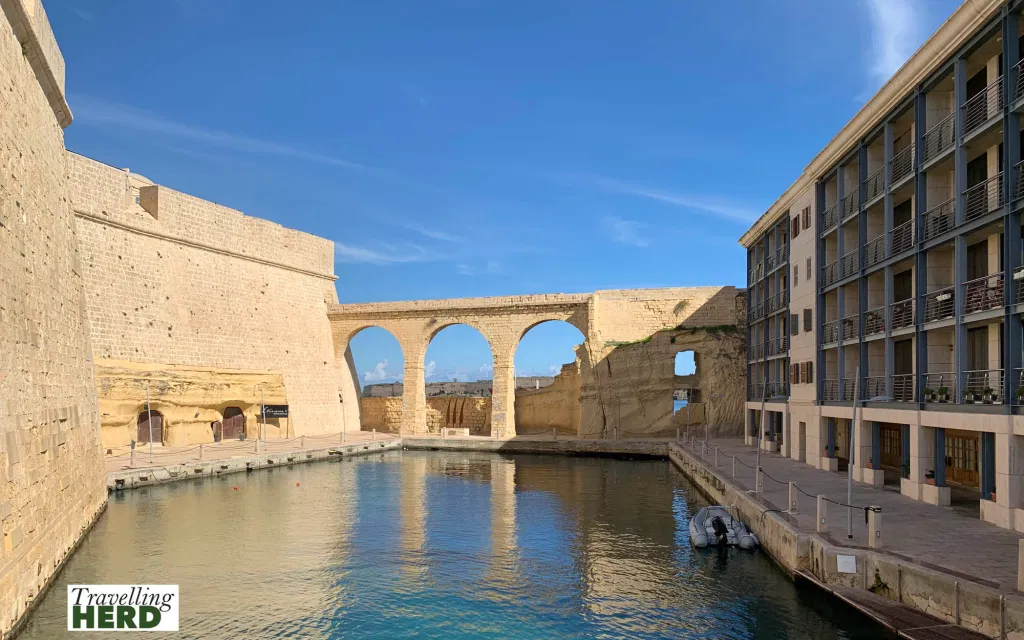
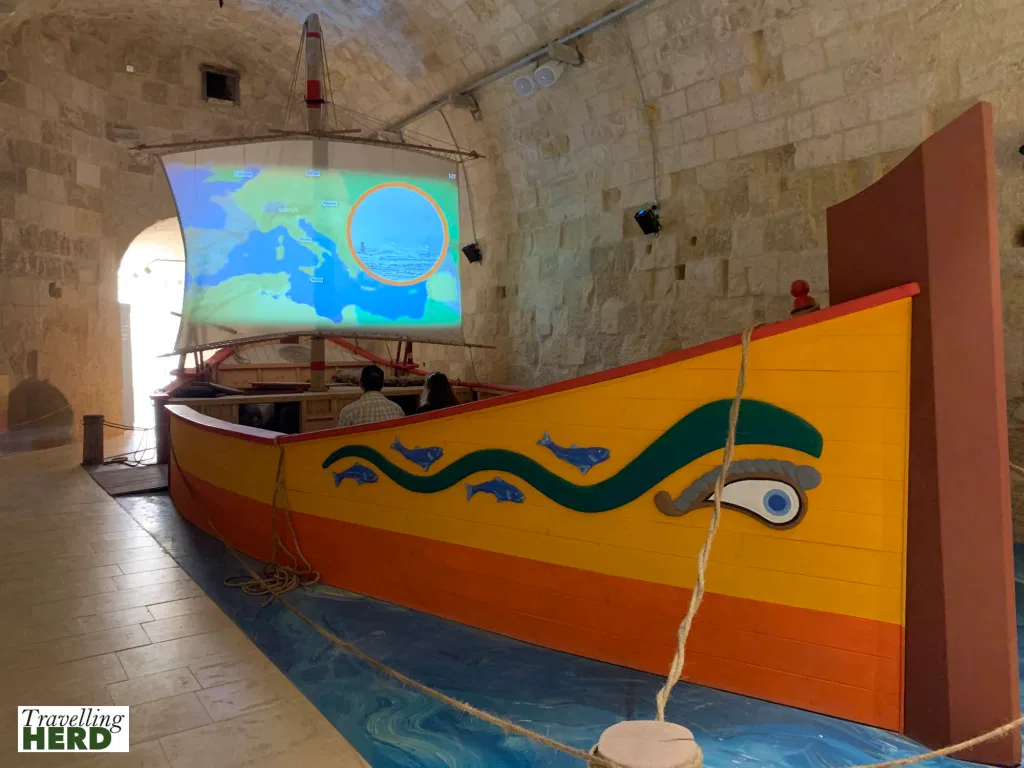
The displays are informative and entertainingly presented.

And whilst we were there the Malta Historical Fencing Society, who were also staying in the same hotel that we were, were holding their International Meeting for 2018 and were practising at the fort [see above].


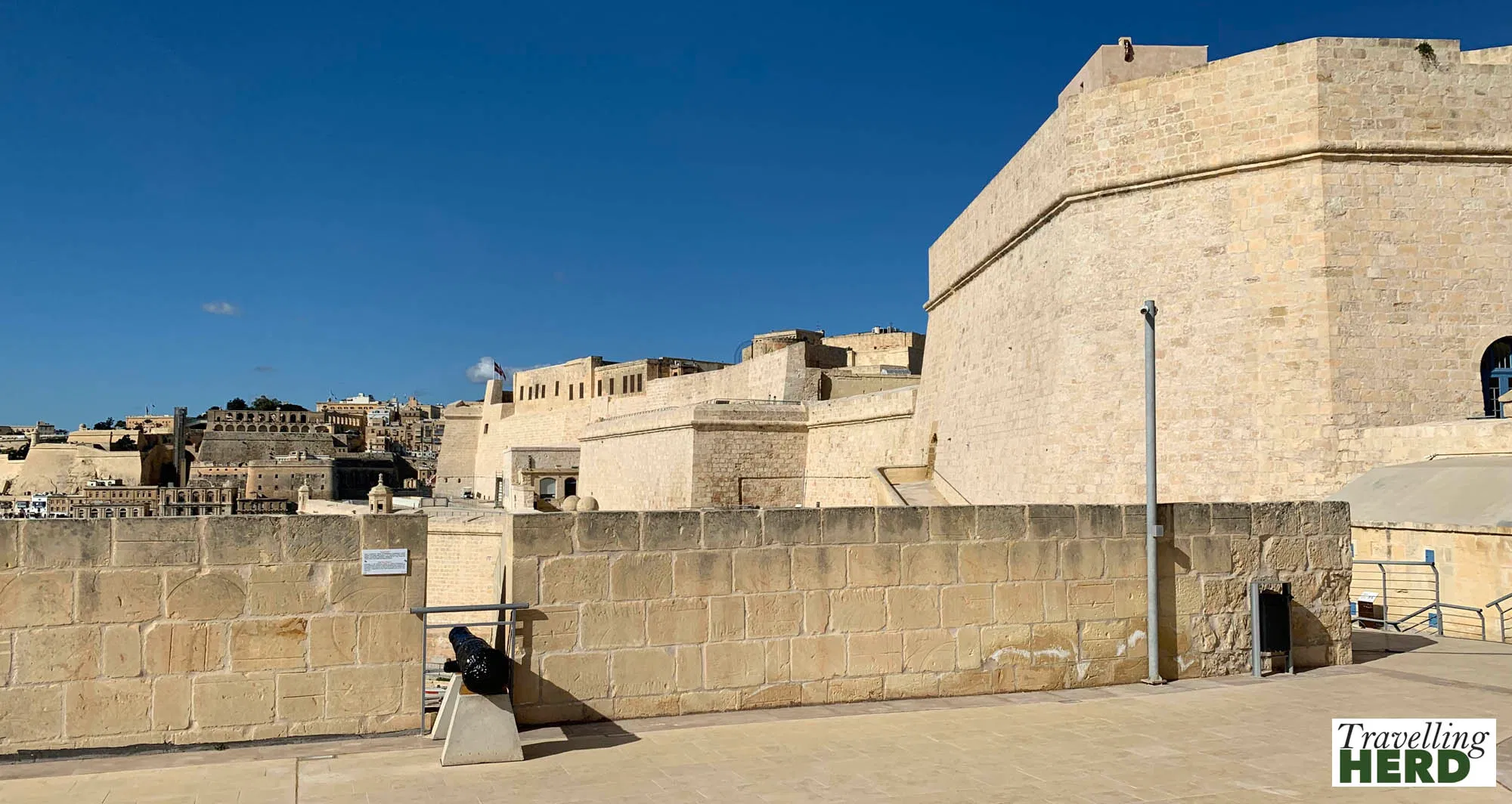
Walked: 6.3 miles [Thursday] &
5.8 miles [Friday]
Location: British Hotel, Valletta, Malta
